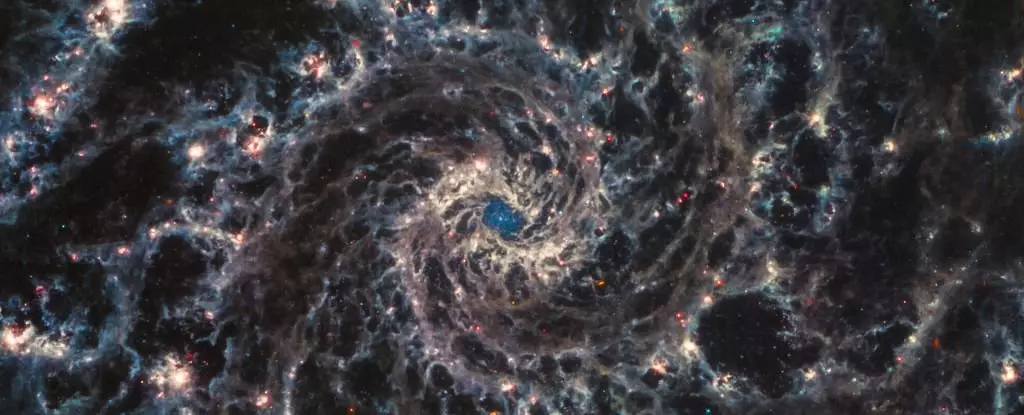The launch of the James Webb Space Telescope (JWST) three years ago marked a pivotal moment in the field of astronomy and our understanding of the universe. This ambitious project, which took 30 years to come to fruition, has fundamentally altered the landscape of our cosmic knowledge. With its advanced capabilities, JWST has opened new avenues for exploration, enabling scientists to peer deeper into the universe than ever before. This article will delve into the groundbreaking revelations brought forth by JWST, examining its significance and the myriad questions it has raised about the early cosmos.
One of JWST’s most remarkable features is its ability to observe the universe in infrared light. This capability is crucial as it allows astronomers to bypass the obscuring effects of Earth’s atmosphere. By positioning the telescope in space, JWST minimizes light interference, enabling clearer observations of celestial bodies. With this technology, even the most remote galaxies—dating back to a universe just 300 million years old—have been confirmed. The discovery of a galaxy that amassed 400 million times the mass of our sun in that early epoch illustrates the remarkable efficiency of star formation during this time, challenging many existing theories regarding cosmic development.
However, JWST’s observations have also introduced perplexing anomalies. Early galaxies appear not only massive and brilliantly luminous but surprisingly blue, often contradicting expectations related to dust content. Typically, matured galaxies are red due to dust that absorbs blue light; however, JWST’s findings suggest an entirely different narrative. The lack of dust raises intriguing questions: Are these galaxies home to extraordinary stars that collapse without the explosive aftermath of supernovae? Or do they experience such grand explosions that dust is jettisoned from their cores? Another thought is that the intense radiation from their massive stars could obliterate any existing dust. Each of these theories emphasizes the complexity of early stellar behavior, revealing that our understanding of early cosmic events is far from complete.
The Chemical Composition Puzzle
Beyond mere structural insights into these early galaxies, JWST has also shone light on their chemical makeup. The telescope has identified unexpected concentrations of nitrogen while other metallic elements remain strikingly deficient. This intriguing chemical imbalance hints at processes occurring in the cosmos that are yet to be understood. These observations challenge existing models about galactic chemical evolution, suggesting that the very fabric of the universe’s early history is more complicated than we had anticipated.
JWST’s prowess allows it to locate galaxies that were previously invisible, providing insights into the cessation of star formation during the universe’s “dark ages.” Although the telescope has not yet pinpointed an exact limiting factor for galaxy formation, the discovery of unexpectedly numerous faint galaxies is promising. These faint spectra are emitting an abundance of energetic photons, suggesting that they may have played a significant role in illuminating the universe shortly after the Big Bang. This newfound understanding could offer keys to unraveling the complex narrative of cosmic evolution.
One of JWST’s most unexpected revelations has been the identification of “little red dots”—compact, luminous sources with properties that defy conventional classification. Initially interpreted as supermassive galaxies, these dots exhibit behaviors reminiscent of both star populations and active galactic nuclei. This duality raises profound questions: Are we witnessing a yet-unknown stage of stellar evolution? The potential implications for our understanding of both star and supermassive black hole formation are monumental.
In addition to vibrant early galaxies, JWST has uncovered what can be termed “galactic corpses”—remnants of intense star formation from the universe’s infancy. The identification of massive galaxies that formed within the first 700 million years poses challenges to existing galaxy formation models. These immense entities contradict the timeline and conditions currently accepted, implying that either star formation occurred at a far higher efficiency or that our perceptions of dark matter need reevaluation.
In essence, JWST is not merely a technological marvel; it serves as a critical instrument in redefining our cosmic narrative. By exposing glaring gaps in our understanding, it pushes researchers to reevaluate long-held theories and adapt to the continuous flow of new data. As JWST continues to operate, astronomers eagerly anticipate what mysteries will unfold from the depths of the universe. The journey of discovery is ongoing, and the questions raised by JWST may very well alter our grasp of cosmic history and the fundamental building blocks of existence itself. With each new observation, we take another step closer to answering the greatest questions of our universe.

